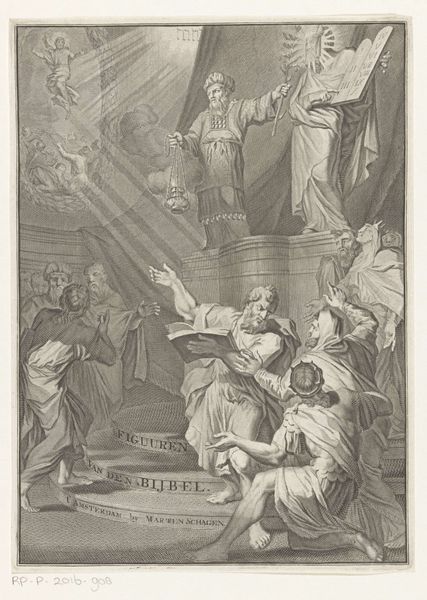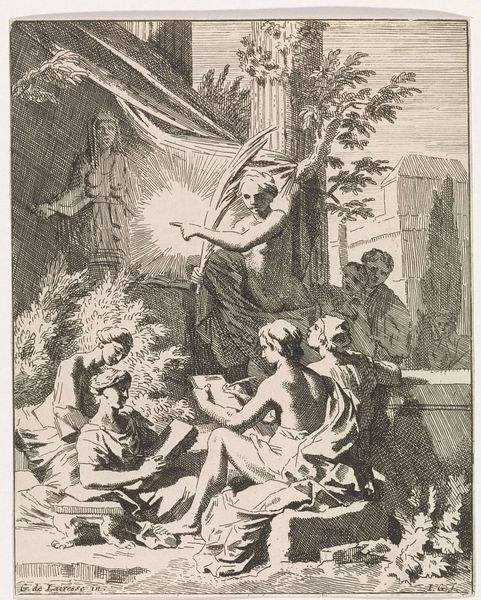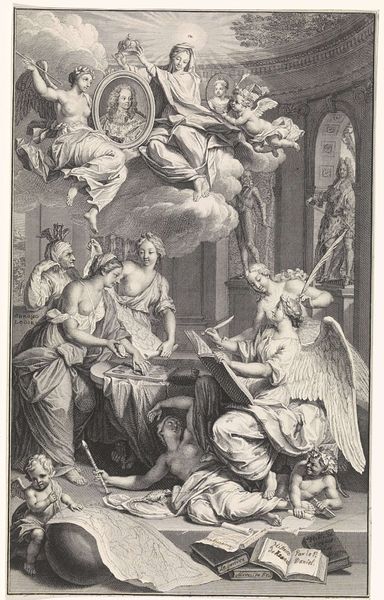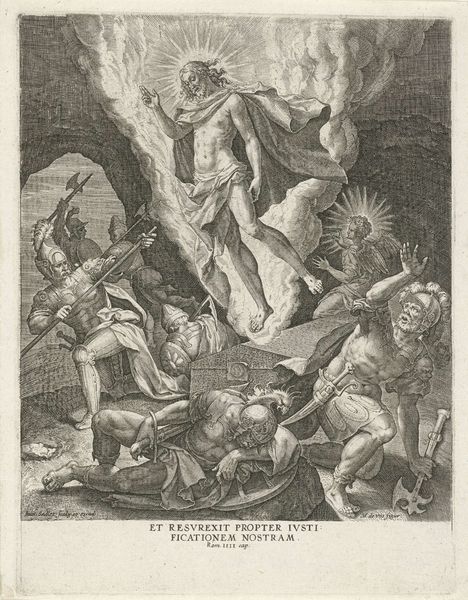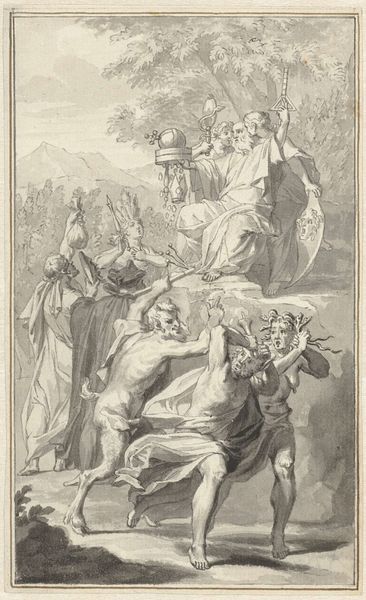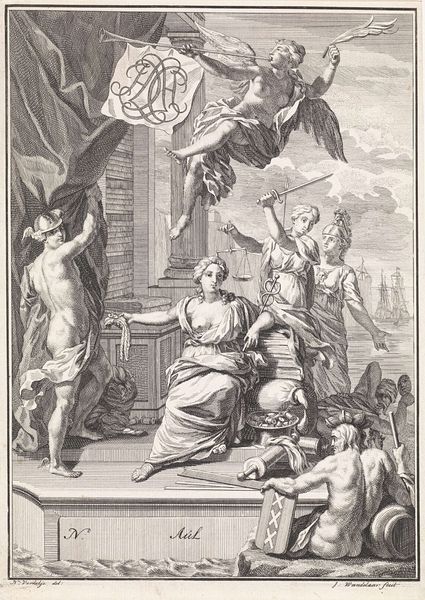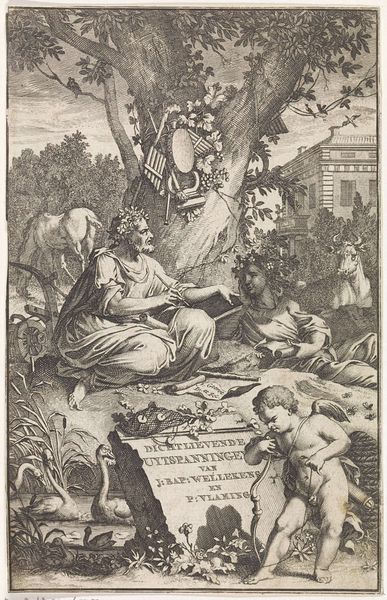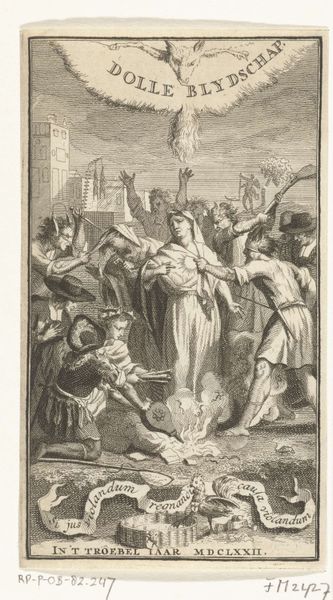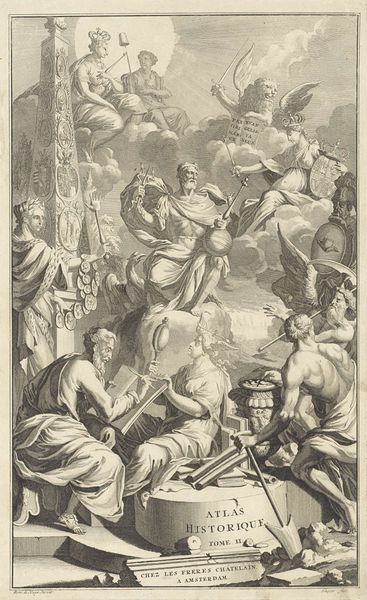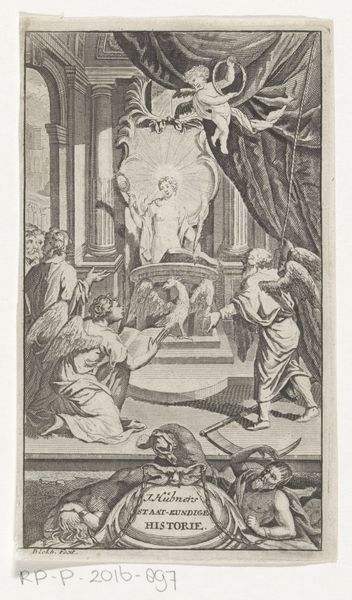
print, engraving
#
allegory
#
baroque
# print
#
figuration
#
history-painting
#
engraving
Dimensions: width 148 mm, height 182 mm
Copyright: Rijks Museum: Open Domain
Johannes Glauber made this etching, Allegory of Printmaking, sometime between the late 17th and early 18th centuries. The process of etching involves covering a metal plate with a waxy, acid-resistant layer. The artist then scratches an image into this layer, exposing the metal underneath. When the plate is dipped in acid, the exposed lines are eaten away, creating grooves. Ink is then applied to the plate, filling these grooves, and the surface is wiped clean. Finally, the plate is pressed onto paper, transferring the inked image. The incised lines create a visual language that is unique to printmaking. Glauber skillfully uses this language to create different tones, textures, and levels of details. The labor-intensive process of etching also had social implications. It allowed for the relatively inexpensive reproduction of images, making art more accessible to a wider audience, which previously had been the preserve of the upper class. In appreciating this etching, we are not only acknowledging the artist's skill, but the social and economic context in which it was created and consumed.
Comments
No comments
Be the first to comment and join the conversation on the ultimate creative platform.
